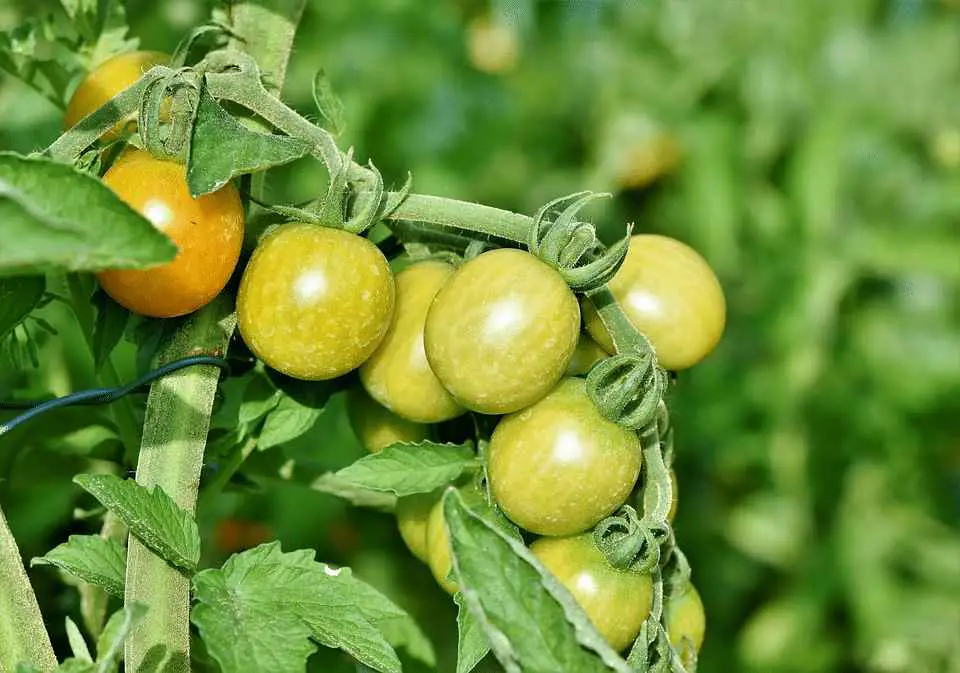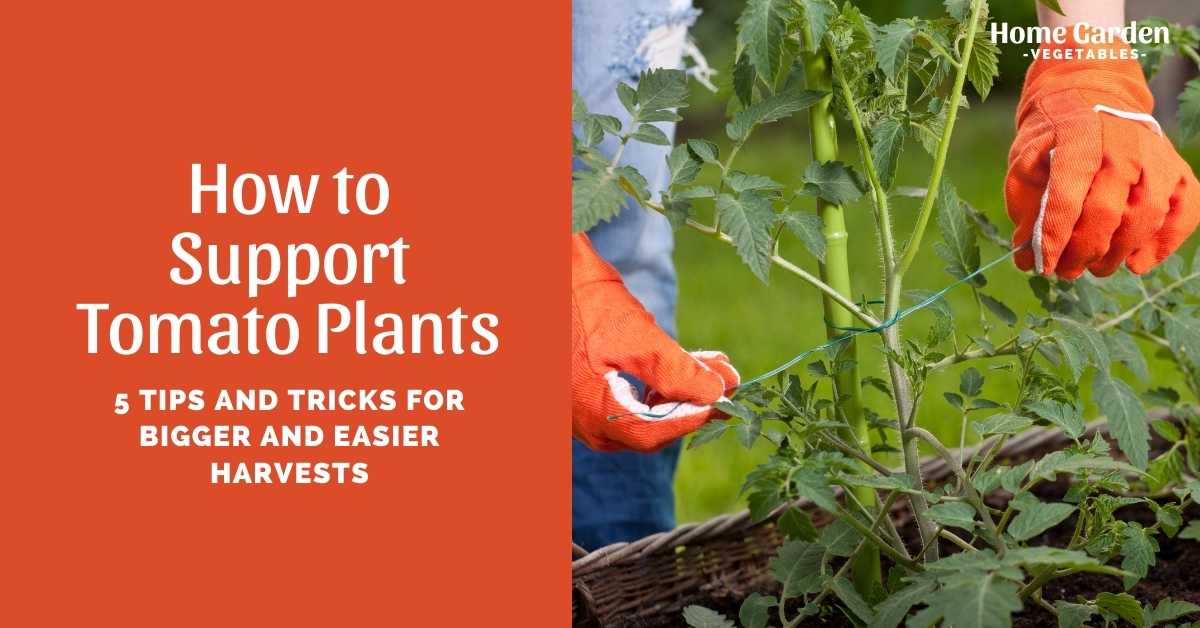A major aspect of tomato growing is how to support tomato plants. Tomato plants tend to droop all over the place if left to grow at their will. However, as an avid gardener, it’s your job not to let the tomato crop conquer your territory; support tomato plants well for organized and efficient use of space and also for improved plant growth and better harvests.
When left to sprawl over the ground, tomato plants don’t just just take up unnecessary space, but they are also more vulnerable to diseases, as a result of which the harvest quality will suffer.
Reader Poll: What online courses would interest you?
When supported by stakes or cages, most tomato plant varieties will perform well and prove more productive. In addition to this, it will also be easier to pick the fruit once it’s ready for harvest.
Different techniques are used by gardeners – all of them with proven benefits over unsupported tomato plants. We’ll be discussing all kinds of way to support tomato plants here so that you can make your pick.

What To Consider When Choosing Tomato Support?
You’ve already learned that there are several ways to support a tomato plant. So which do you choose? Other than your preferences and availability of the type of support in your area, there are some important things to keep in mind. Keep in mind that if the kind of support you’re looking for isn’t available at a gardening center, you can also order it online. All kinds of tomato supports are easily available at online gardening stores.
Subscribe to our newsletter!
Here’s how to choose the tomato support depending on some essential factors.
- The Type Of Tomatoes
Are growing a determinate tomato or an indeterminate variety? These two major classifications in tomato plants grow and produce differently, and will consequently need different types of support for best results. The plant tag on the seedlings you buy or the seed packet will tell you the type of variety it is.
Determinate tomato plants have a bushier and sturdier growth and will be better off with a tomato cage or other types of smaller supports. Indeterminate tomatoes, on the other hand, tend to grow taller and will need taller supports to prevent them falling to the ground.
- Pruned Or Unpruned?
You’ll also need to think in terms of how you’ll train the tomato plants to grow. Possibly you’re short of space or want to see bigger, healthier fruits and choose to prune out the suckers throughout the growing season. If this is your plan, tomato ladders are the best support for your tomato plants.
In contrast, if you’ll let your tomato plants grow unpruned and enjoy all the harvest they can give you, cages are a better option. In any case, determinate tomato plants don’t need much pruning and work best with cage-style supports.
- The Size Of The Growing Area
The kind of space you have for growing your tomato crop is also a consideration when picking the type of support that works best for you. If you have plenty of space, tomato cages aren’t a problem. Though they have a larger footprint, they can support vigorous plants that are growing with or without pruning. Trellises are also a good option for gardeners with plenty of room to grow.
If you’re short on space, however, tomato cages aren’t for you. You may want to consider stakes or ladders together with regular pruning of the tomato plants to maintain a smaller footprint. Square-foot gardeners can also benefit from tomato ladders thanks to the smaller horizontal space they need. If you’re using stakes, however, you’ll need to tie the branches to the support as they grow. With tomato ladders, tying isn’t necessary.
Support Tomato Plants Outside
When growing tomatoes outside the greenhouse, there are a bunch of training techniques that you can use:
Stakes
You can use any kind of stake for this, wood, metal or bamboo. Just make sure that the stakes are at least 5 inches in length. Install a stake with each plant at the time of planting. Tie the stem loosely to the support with strings or garden twine as the plant grows. It’s one of the cheapest methods to support tomato plants and is therefore preferred by many gardeners.
Cages
Tomato cages are easily available and can keep the tomato plants upright without the need to tie the branches. You can either purchase them readymade and install them in the ground around your tomato plant or build them at home. Building them is easy with livestock panels and results in a much more robust and durable cage as compared to the one that you’ll buy from the store.
Determinate tomato varieties are more suitable with this type of caging since you know the estimated length of the tomato plant and the height of the cage you’ll need to prevent the top of the plant from toppling over once it achieves its full length.
When using indeterminate tomato varieties with cages, you’ll need to install a stake as well for added support of the plant once it grows beyond the height of the cage. Brace the vines with the stake as they grow taller. Indeterminate tomato plants can also be tackled by pinching off the top when it reaches the height of the cage. This will stop plant growth and maintain the desired height.
Fence
Placing wire fencing around your tomato crop also works well to support tomato plants. If you don’t already have a fence structure somewhere in your garden, you can buy one from the store to support the tomato plants as they grow.
Trellis
Instead of training tomato plants into a single vine, trellising them offers horizontal support for the side branches as well. Install vertical stakes to support the main stem and connect individual stakes with twines to form a network that supports the side branches. You may have to tie the branches loosely to the twines as they grow.
Ladders
For small-space gardening, ladders are the ideal solution to maximize your tomato harvest while using minimum space. These are half cage structures that look like a ladder. Also, when growing alongside ladders, tomato plants don’t have to be trained into a single vine by pinching off the side shoots. Instead, tie the side shoots loosely to the rungs as the plant grows.
Support Tomato Plants In The Greenhouse
Hanging string method, also called stake-and-wire method, is one of the most commonly used techniques for supporting greenhouse tomatoes. With this method, the tomato vines are trained onto the vertical strings. Side shoots are limited by pinching some of them off so that there are only a few main vines left to grow.
- If your greenhouse is strong enough, you can attach 12 gauge wire from the purlins of the greenhouse and anchor to the base of the plant with the help of clamps. If your greenhouse isn’t strong enough to support the weight of fully grown tomato plants, you can use vertical stakes to attach the wires instead. A single wire line for each plant is sufficient for its support.
- Once it reaches about 8 inches, you’ll need to string it. To each row hang the same number of twines as the number of main vines in the tomato plant.
- Using a slip knot, tie the string to the wire. Tie the other end of the string to the base of the plant loosely. Tie it below a fully grown leaf branch.
- Each vine needs to be trained onto a separate string. You can also use tomato trellis clips to tie the string onto the branches instead of knots.
Pruning
Pruning the tomato plant to limit the number of main vines is an essential part of plant maintenance, especially when growing in greenhouse conditions. 1 to 2 vines are ideal for tomato plants growing in greenhouses.
Suckers that grow at the points between branches need to be pinched out neatly to shun the growth of additional vines. Start removing suckers as soon as the first flower appears and continue it throughout the growing season. Check the plant regularly and prune out suckers while they are still young.
Once the tomato plant reaches the top of the wire, it can be topped off to shun further vertical growth. Alternatively, you can also let the top of the plant droop over, and support with additional wires to extend growth and increase production.


At what number of the moist test indicator shall I water my tomato plants ?
I tend to go by eye, if the soil is very dry then I water. At the moment we have very hot weather and I’m watering once a day and soaking them deeply once a week when I feed them. You can dig your finger into the soil and if it’s dry then definitely time to water. Are you using a soil moisture tester?